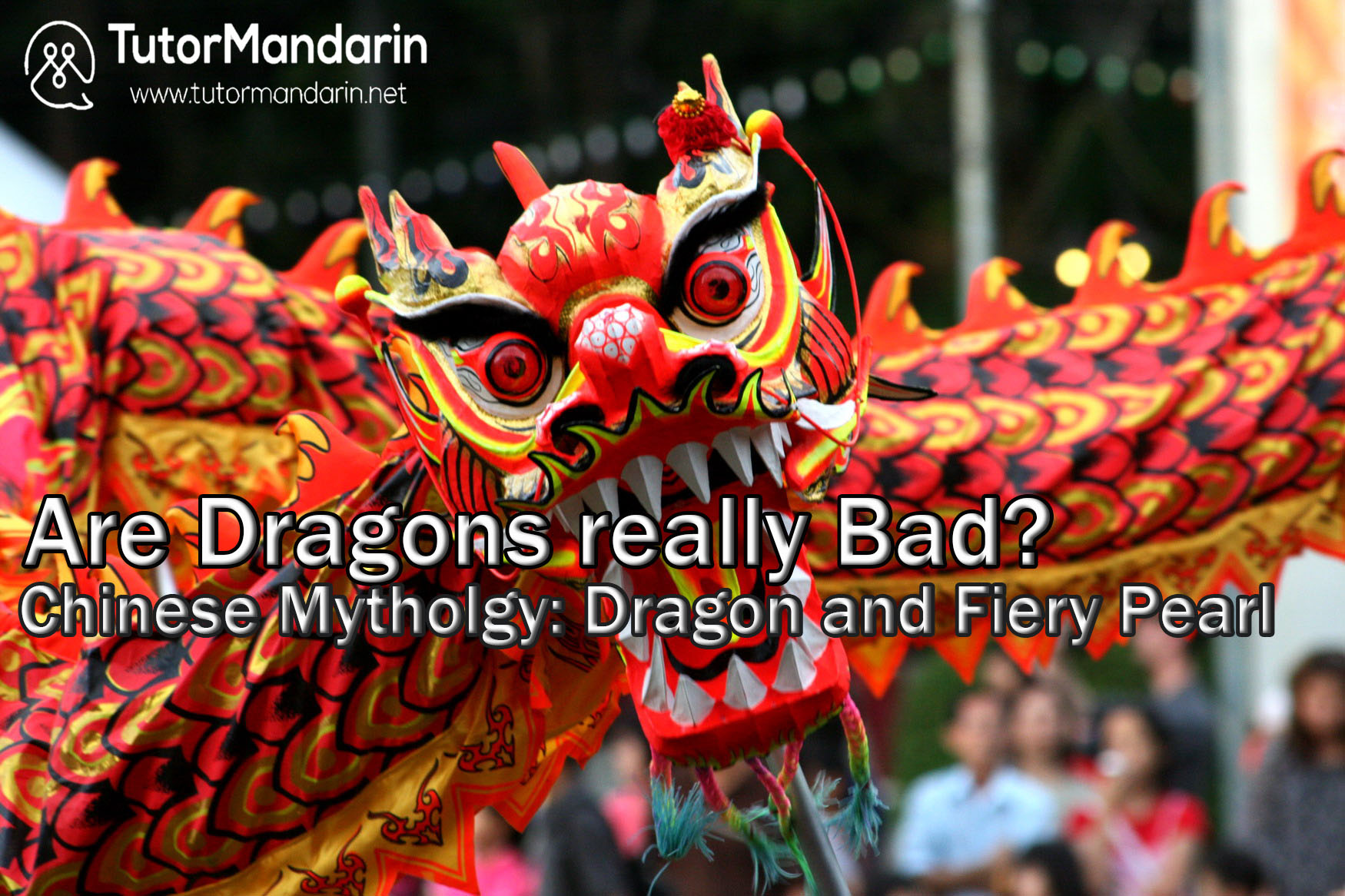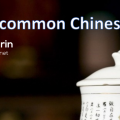Contents
Chinese Mythology: Are Dragons Really Bad?
If you are either a fan of “Supernatural” or “Once Upon a Time”, you will know how “mean, selfish and powerful” dragons are. I enjoy reading all kinds of books (especially mystery and mythology!) but when I first encountered stories about dragon slayers, I was shocked.
My first thought was… Are Dragons Really Bad?
Most stories describe dragons as evil and mean creatures who bring nothing but destruction to mankind. It was really hard for me to absorb this information as it is totally the opposite in Chinese Mythology.
Read to find out more about if the dragons from the Chinese mythology.
Dragon from the Chinese Mythology
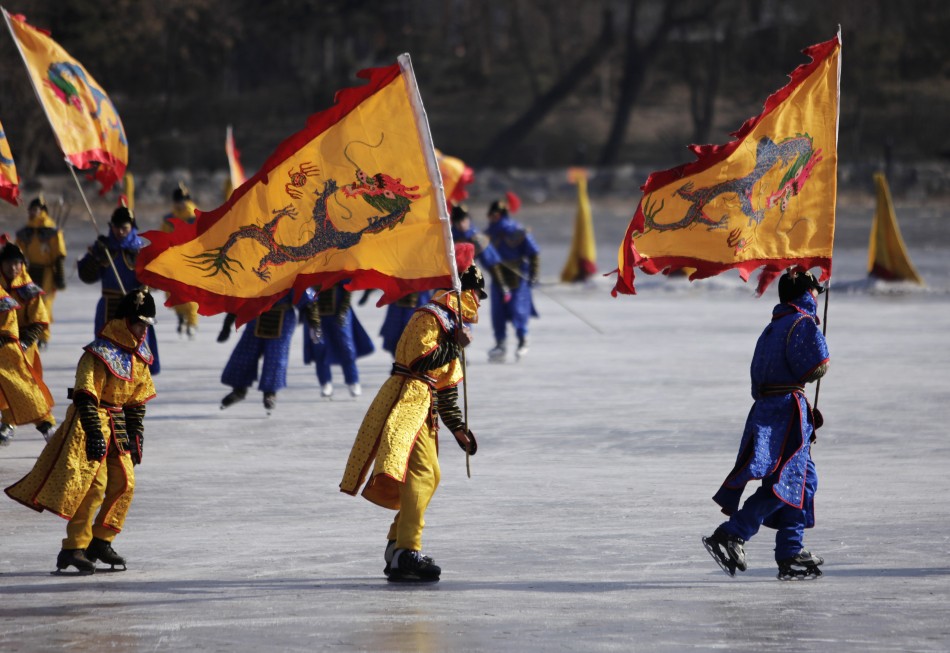 The dragon as a totem on Chinese flags
The dragon as a totem on Chinese flags
There’s no real evidence that Dragons exist. Nonetheless, the dragons can be seen in Chinese culture as early as the fifth century BC. When ancient Chinese people discovered the fossils of the dinosaurs, they documented them as belonging to dragons. This can be seen in 300 BC documents about the discovery of Dragon Bones.
The dragon is called “龙 – lóng”
Others believe that the origin of the dragon is through a combinations of different animals. There’s evidence that Chinese tribes used different animals (such as deer, lion, dog, etc) as a totem on their flags. The first legendary Emperor “the yellow Emperor – 皇帝 Huáng dì” ( 2697-2597 BC) used a snake as a totem. He launched a series of wars against nine tribes in the Yellow River Valley. Every time he defeated another tribe he incorporated his defeated enemy’s emblem into his own. This also may explain why dragons are made up of various animals’ parts!
The appearance of the Chinese Dragon
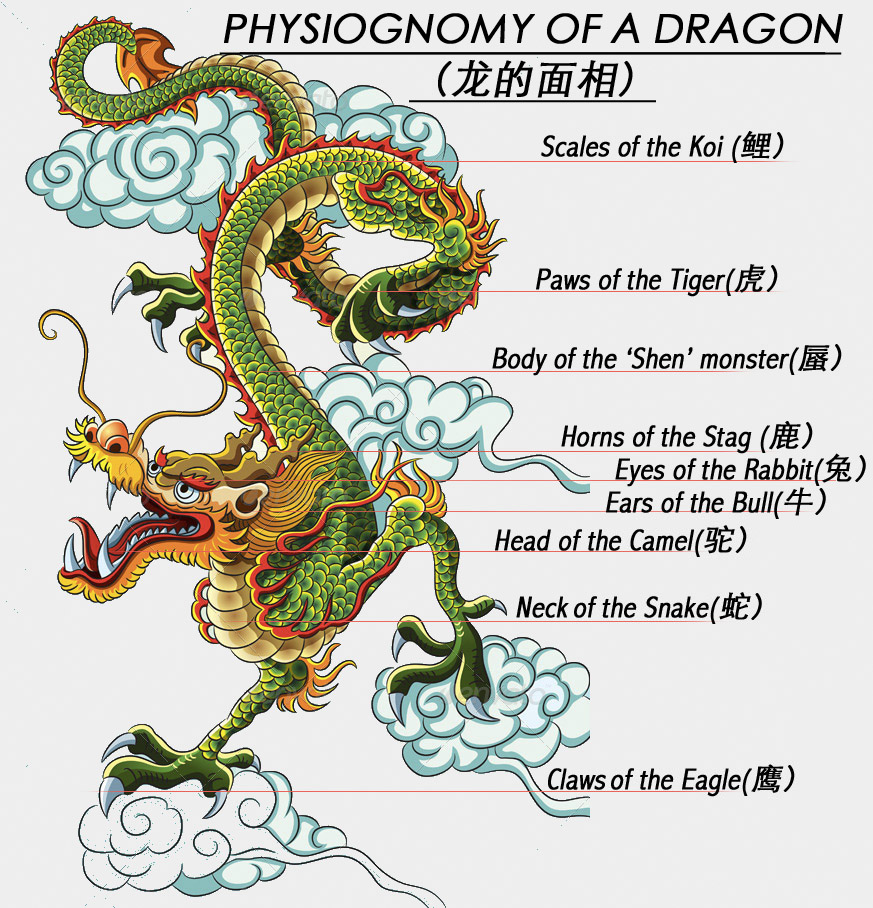
The 9 physical appearances of the dragon
Wang Fu from the Hang Dynasty recorded that there are 9 physical appearances that make Dragon from Chinese mythology.
In addition to these 9 parts, Chinese also firmly believe that dragons have 117 scales. Of these 117 scales, 81 have “阳 – yáng” essence (aka positive energy) and 36 “阴 – yīn” essence (aka negative energy). The Chinese mythology believes that this 31 negative essence is the cause of the dragon’s anger. But since there are more positive scales than negative ones, most of the dragons are known to be wise, kind and just. But when they become angry they can become very dangerous and will destroy via floods, tidal waves, and storms. Ancient Chinese believe that the big flood was the results of humans upsetting the dragons.
The Governors of the 4 Seas
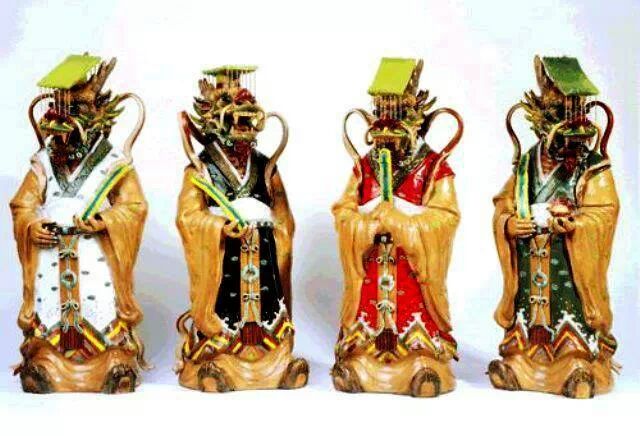
The four dragon kings in the human form
In general, there are four famous Dragons kings that govern the 4 seas in the Chinese Mythology. They are the divine rulers of the four seas each corresponds to their own sea. They are
- The Dragon King of the East Sea (East China Sea)
- The Dragon King of the South Sea (South China Sea)
- The Dragon King of the West Sea (The Indian Ocean and beyond)
- The Dragon King of the North Sea (Lake Baikal)
Although these dragon kings have a true 9 physical appearance of the dragon, they can also transform into human form. The Chinese movies portray them as human king attire with a dragon head living in the underwater crystal palace. For a fun fact, they even have shrimp soldiers and crab generals.
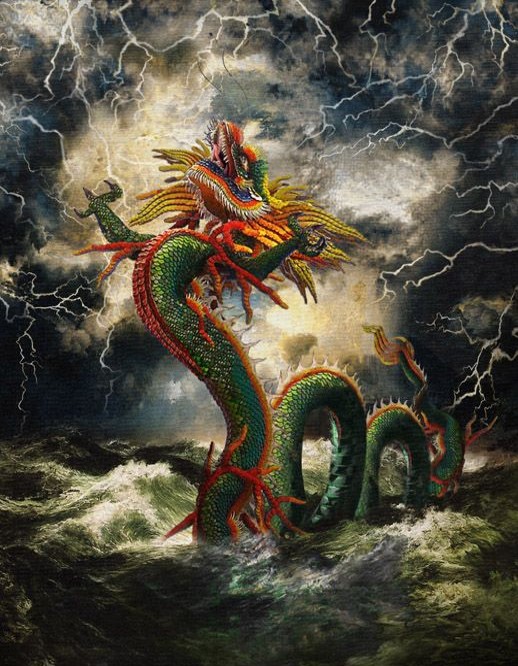 the dragon controlling the weather
the dragon controlling the weather
Besides, being the rulers of the aquatic animals, they also have the divine power to control the weather by manipulating the clouds and the rains. They can also ascend to the sky and fly over the sea. The Chinese Dragons are sometimes depicted with a bat like wings in the arts. But these wings are usually small compared to their big physical bodies. Therefore, there is no logical explanation of their flying and weather-controlling power from their physical appearance.
However, some believe these powers come from the flaming pearl which can also be seen held by dragon kings in ancient paintings. Some Chinese mythology says this pearl has the spiritual energy of wisdom, prosperity, immortality, the power to grant wishes, to control the weather and the moon to control the tide.
There is also another interesting story behind this pearl.
The Flaming Pearl of the Dragon King
Artists usually portray the flaming pearl as a small red or white sphere with a fiery blaze. Earlier Chinese mythology thinks this ball is the sun but slowly they see it as a flaming pearl. This belief may be because the dragon is the king of the sea, not the sky. There are many myths around this flaming pearl in Chinese mythology. I’ll tell you one of them.
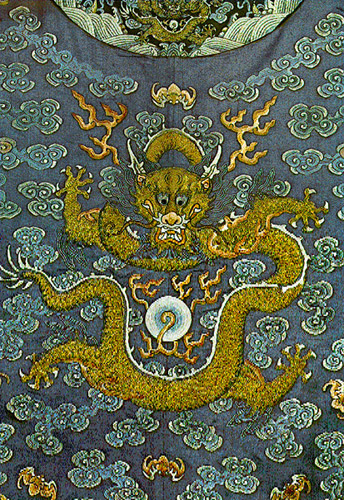
The dragon and the fiery pearl
Chinese Dragon Pearl Myth Part #1: “The Mother and the Son”
Once there was a mother and son who lived near the bank of the Min River in Sichuan. They were kind-hearted but very poor. Every day the boy would go to the mountains to cut grass. He then sold these to other villagers as fuel and cow’s food. The money was not that much but it was just enough for them to survive.
Chinese Dragon Pearl Myth Part #2: “The Drought”
But one year, there was a drought. The son couldn’t get as much grass as before. Thus, he earned less than before which was not enough for them. Things were getting worse for the two and the poor mother became ill from hunger.
The son went to further and further places to get the grass. One day he came across a patch of very healthy and green grass. He happily cut the grass and brought back to sell. He earned more than before from this patch. He used this money to treat his mother illness.
Every day the son would go back to the same spot and cut the grass. After some time, he became lazy and decided to get the grass from the root and grow on his farm. To his surprise, he saw a big pearl underneath the roots.

The Ming river in Sichuan
Chinese Dragon Pearl Myth Part #3: “The Pearl”
He planted the grass in his backyard and gave the pearl to his mother. She put it in a rice jar. The next morning they witnessed a miracle. The grasses became dry and withered while the rice jar became full. Only then did they realize that was a magical pearl. They put the pearl in the money box and the next day it was full. They became rich very quickly with the help of the pearl!
Chinese Dragon Pearl Myth Part #4: “A Dragon is Born”
Their neighbors who were rich and selfish became suspicious of them. They asked them about their wealth. The honest mother and the son told them what exactly happened. The greedy neighbor tried to rob the pearl from them. The son refused to hand over the pearl and swallowed it. After a while, there was very loud thunder and the son transformed into the dragon. The son who became the dragon said farewell to his mother for the last time and went into the river. He then became the guardian of the river.
Of course, this is just one of the myth about the dragon and the pearl. If you know any other myth, comment below and let us know!
The Emperor and the Dragon
According to Chinese mythology, the dragon is the auspicious god-like creature who bestowed wealth and good fortune to those who are worthy of it. Therefore, in Chinese history, the Emperors usually referred themselves as either dragon or the descendant of the dragon.
They used the dragon as a symbol of imperial power. You can still see the Imperial artifacts with a dragon on it if you go to the palace museum in Beijing, China.
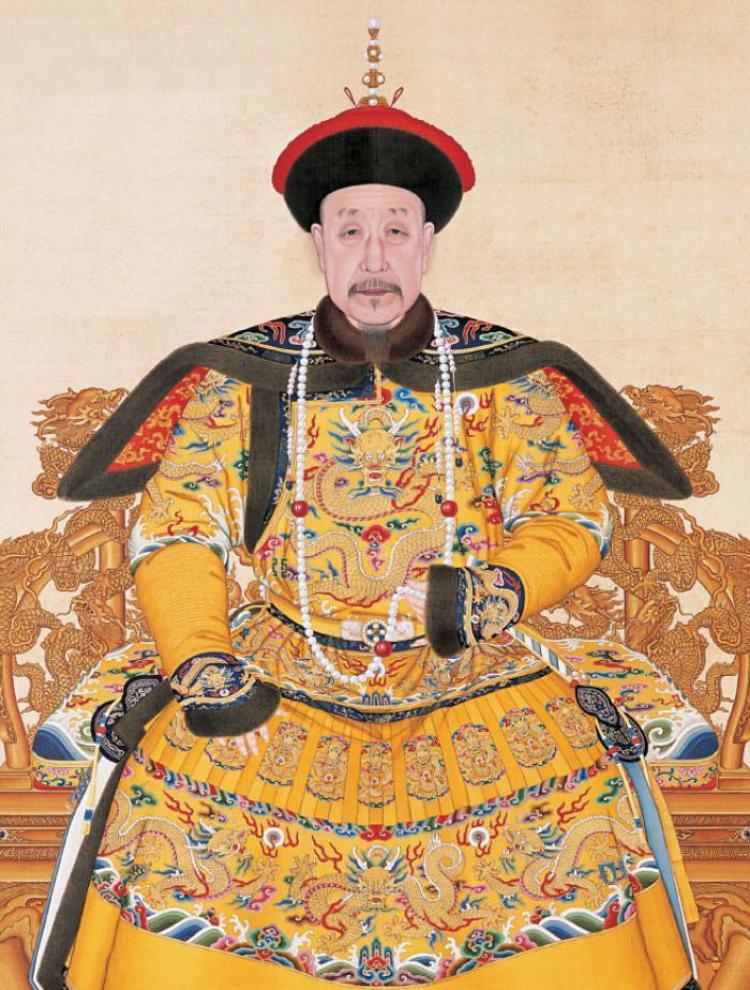
the Qianlong-Emperor wearing ceremonial robes
An interesting fact is that starting from Yuan dynasty they created the two-horned five-clawed dragon that only the Emperor “the son of Heaven” can use. Other princes and nobles used the four-clawed dragon.
Modern Views on the Chinese dragon
Even nowadays, the importance of dragon in Chinese culture has not changed. Modern Chinese people still consider dragon as a cultural, auspicious, good luck symbol. No one argues the existence of it.
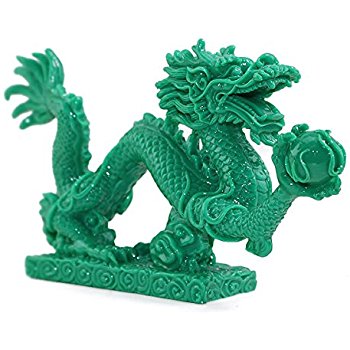
Modern Chinese dragon gift
The dragon is also one of the 12 Chinese zodiac animals. As Chinese people believe dragon born has the gift of courage, tenacity, intelligent and confidence in their personality, they want their son to be like a dragon. There is even a very common phrase “望子成龙 – wàng zǐ chéng lóng”. This literally means that parents want their sons to become successful like a dragon.
Even in Chinese wedding traditions, they will invite a dragon born child to play on the new bed so that the newlywed will have a dragon-like son. Moreover, in Chinese business society, the usage of the Dragon arts or porcelain as Chinese gifts to gain favor from the high-status people is very common.
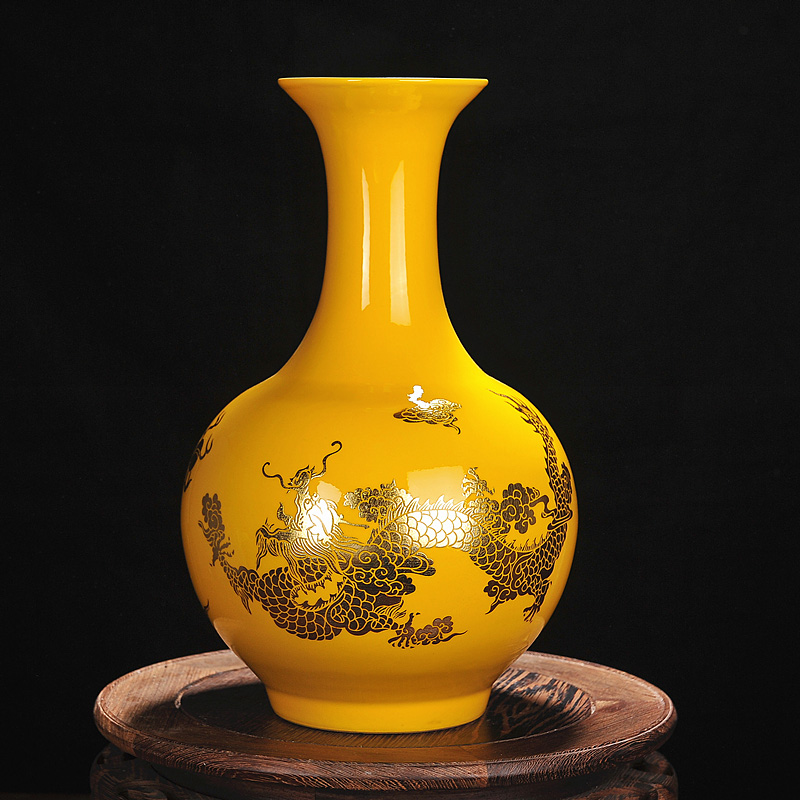
Modern Chinese dragon porcelain
Summary
In conclusion, the dragons are the auspicious god-like creature and they possessed a fiery pearl that can grant wishes in the Chinese mythology. They are the king of the seas and have the power to control the weather. The usage of the dragon as the imperial symbols show how much Chinese people value the dragons. Even modern Chinese people still regard dragons as powerful being and use as a representative of powerful and talented people.
Have you come across any Chinese dragons? If so, let us know where and how in the comment session below!
Have fun Chinese language learning through the Chinese Culture!
Don’t forget to sign up our free trial to learn Mandarin and download the Chinese App for more Chinese language materials and to learn Mandarin online.

